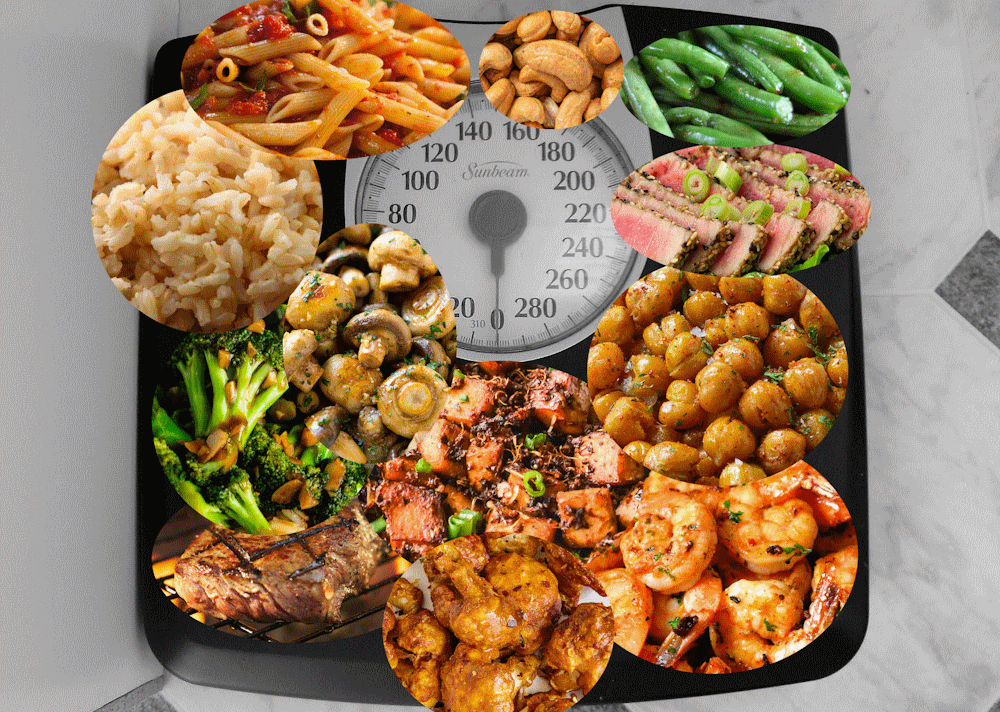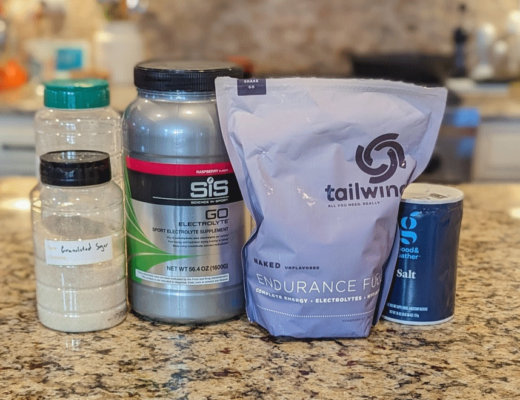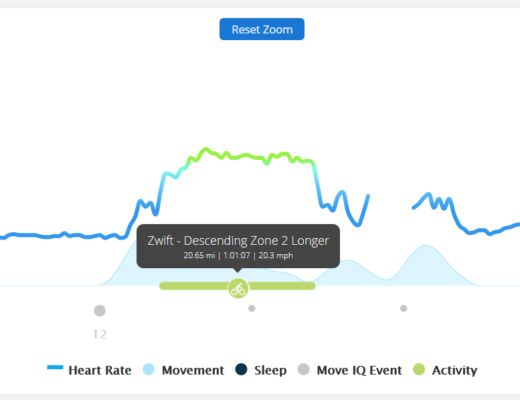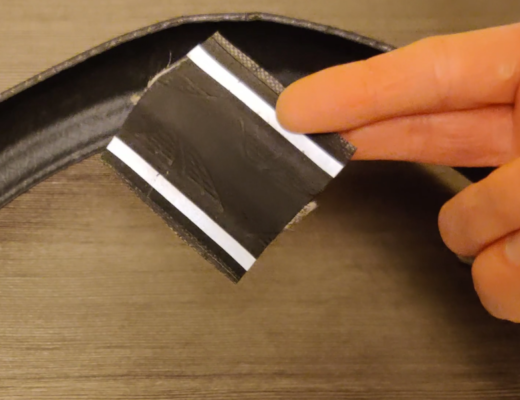Every diet, no exceptions, if it works, it works the same way – through the magic of Caloric Deficit. Fad diets can make a lot of noise, and often demonstrate amazing stories of initial success. Some of them by a diuretic effect, but most of them actually do the business because restriction is “easy” in the short term. The difference is in the details, i.e. how you get there, which can play a massive role in the sustainability and long term health impact of the diet. Some of these diets are awesome, if they’re sustainable. But the problem is that many of them aren’t because they require giving up things we don’t want to give up, and others are just harmful.
Before diving in, just want to say that I suspect that regular readers of the site have a good handle on everything said below. There are a few goals here, being condescending isn’t on the list 😁, but being as complete as possible is. It is very likely that much of what is outlined below will be old hat, but just in case it isn’t, it’s there.
Also, it is important through all of this to maintain a healthy relationship with food. None of this guidance is intended for someone who has a history of problematic eating. Those who have, will want to work with a professional who can help them manage their eating/weight. This is intended as a framework, and mostly an artifact of the myriad posts I’ve seen on various forums around “the right” diet, and how to use exercise to achieve weight loss with no mention of diet.
Broadly, being overweight isn’t great for you. We all know this, although why it’s not great is complicated and at least for many scenarios mostly correlative in nature. I don’t even like the term “overweight”, because it’s labeling the wrong thing. Weight isn’t the problem per se, excess body fat, in bad places of the body, usually is. And even there, it’s still a very rough rubric to use as a target. It is absolutely possible to be “overweight” and completely healthy at the same time, or have a body mass index (BMI) in the “green” range and not be (aka “skinny fat”). That said, embracing the nuance there would be bad for SEO, so from here forward mentally replace “overweight” with “body fat percentage above the healthy range”.
Many of the negative implications of being overweight are long term in nature. So it’s important to understand that being overweight isn’t worse than some of the places we can get to if we try to lose weight in an unhealthy way. There are plenty of diets that are terrible for you, that you will lose weight following, and they aren’t all artifacts of a bygone era. If you want to lose weight, and many of us do, how we get there is just as important as the end result. Remember, most of the health issues related to being overweight are correlative and long term. We don’t want to create new problems by “solving” weight. The solution is changing what we eat, and how much we eat. Create a caloric deficit, and get where we want to be slowly, using a variety of healthy, whole foods.
For most people losing weight is a math problem, and not a very complicated one at that. If you consume more calories than you burn, you will gain weight. If you burn more than you consume, you will lose weight. It really is that simple, for most people.
But you can’t solve this math problem with exercise. It can only be a part of the equation, and for most people a small part of a plan to lose weight. Obviously, there are huge benefits to exercise even if you aren’t losing weight doing it. You might even gain weight as you add more activity, and that’s a great thing. Bone and muscle density are essential for reducing risk of injury, especially as we age. Everyone should move, most of us should move more. Exercise, or put better, intentional movement, can assist in a broader wellness goal, but the number of calories you burn while exercising outside of what you would have burned just existing isn’t large enough to make a significant difference for most people.
Combined with eating discipline you absolutely can exercise enough to make a difference. For e.g., when I want to drop my body fat % I will do 5+ hour Zone 2 workouts (and stop drinking beer). Even farther down the long tail we have World Tour cyclists, who will burn 6,000 calories in a stage. But, both of these cases are relatively rare compared to what most people want to do, or are capable of. The bottom line is that exercise is great for us, but it’s not an effective way to lose weight, and may actually cause weight gain.
The easiest way to lose weight is to change the caloric density of the food you eat. Seafood has roughly half the caloric density of red meat, many plant proteins are lower than that. Eating more plants and fiber rich foods will make you feel fuller than eating the same number of calories in a doughnut, steak, or soda. Swapping low-calorie, high-volume foods for the high-calorie, low-volume foods is low touch because you can eat roughly the same volume of food and reduce the impact on your waistline.
We like to pivot our meal around protein, so here are some practical examples, calories per 100g:
- Shrimp: 99
- Prime rib: 266
- T-bone steak: 247
- Salmon: 208
- Tuna: 132
- Tilapia: 129
- Chicken breast: 165
- Batter fried chicken breast: 260
- Chicken thigh: 177
- Tofu: 76
- Tofu batter fried: 271 (this number is oddly high given that it’s 100 calories more than the chicken batter numbers 🤷)
- Red beans: 127
- Chickpeas: 180
Notice that it’s not just the protein source, but also how it’s prepared that matters. Battering something adds calories whether it’s chicken or tofu. Just so it doesn’t go unsaid, that’s not necessarily a bad thing, it’s just information that we can use to turn the knobs. Although, maybe don’t batter fry everything.
Diets that require you to give up something you don’t want to give up aren’t sustainable long term. If you like ice cream, doughnuts, or prime rib go ahead and eat them. Just be aware that if you want to lose weight, you will need to reduce the portion of your monthly food volume that includes these calorie-dense foods, and potentially take the next step. But before we get there, it’s worth mentioning that many of these calorie-dense foods often also have other attributes that make consuming them in quantity problematic. For example, the fat in prime rib that makes it taste awesome, is saturated fat. Which is totally fine in small quantities, there is saturated fat in some vegetables, but in larger quantities it isn’t great for your cardiovascular system. There’s also potential that some of these foods increase your risk for things like colon cancer when consumed frequently. It’s also important to understand that replacing problematic proteins with problematic carbs doesn’t solve the long term health consequences, even if it reduces the caloric density. This might seem like blocking complexity, but it doesn’t have to be. Diversity in diet solves most of the “too much of one thing” kind of problems, and if you’re ever in doubt, it is very difficult to go wrong with substituting a dark green vegetable for whatever you want to eat less of.
When you’re eating out, choose seafood over meat. Opt for brown rice, quinoa, or couscous instead of white rice, mashed potatoes, or fries. Always get the vegetables, and eat your vegetables first. Avoid battered foods. Don’t eat dessert. Push your mom out of your head, and get comfortable with the idea that you don’t have to eat all the food they give you; this one is really hard for me.
When you’re planning a meal, if you can manage to pivot the menu around a vegetable, do that. If that’s not practical, start with a protein that has lower caloric density, most of the time. If you can, make the protein plant-based a few times a week. If you’re cooking large portions of protein, like a chicken breast or steak, cut it into sensible sizes before serving so everyone can start with half of what they might plan to eat. Pre-slicing meat can enhance the presentation and helps stop the cooking process so you don’t overshoot target done-ness. So it’s a great idea, even outside of making it easy to plate the right portion.
Eat less. The next step is to eat less. When you can control your portions, start with half of what you think you’re going to eat on your plate. Eat as slowly as you can. Take a break when you’re still slightly hungry to let your brain catch up with your stomach. Mentally track what you’ve eaten so far to sanity check what your stomach is saying. It might be lying to you.
Starting with half means reaching for that second helping is easy. A second helping slows you down more, and helps press the satiated button in your brain because you “had a second helping”. When you take that second helping, only take 50% of what you want (25% of what you planned to eat originally). Repeat as needed, or better yet, don’t. But, don’t make it feel like a hardship. Part of the reason we eat too much is that our brains reward momentum. They want us to push as many calories down the hatch as quickly as possible. When you do this for an extended period of time it expands our sense of “full” past what we need to eat. Slowly reversing this cyclic pattern helps retrain the finish line.
When you can’t control your portions, follow this strategy by dividing the food in half before you start eating. Plan to take a doggy bag home.
The final step is to get comfortable with being slightly hungry between meals. Staying well hydrated will help reduce the feeling of hunger, but don’t drink soda (diet or otherwise) to do it. Actually, just don’t drink soda. If plain water is a hardship, add a splash of lemon or lime juice, get a carbonator (e.g. Drinkmate), or both. Dressing up the water a little can tick the not-plain-water box without adding calories. Keep some small, healthy snacks like raisins, grapes, or nuts around to help make it feel less like of a hardship too. A strategic allocation of salted cashews can make a world of difference.
Make the snacks small and low caloric density. Use small containers to quantify the amount. Don’t go back for a second round. Remember, the goal isn’t full, it’s only to trim the edges off the “hardship” hunger. You only need to cut it back enough to make it tolerable. This is the bonus round, but it helps retrain the brain and stomach faster than just managing portion size. Our brains send “I’m hungry” signals way before we actually need food. Some of that is biological, but some of it is because we train them to do that by always being sated.
Personally, I don’t pay attention to input or output calories in a specific way. Obviously, and I hope this has come across, it is important to have a rough handle on what you’re eating (complex carbs, lean protein, good fats, tons of veggies) and its caloric content, but counting intake calories is tedious, unrewarding, and prone to error. The situation on the output side is worse, even when we ignore exercise. That’s just a guess, a very rough guess. The only way to know for sure that what you’re doing is working is to use a scale.
The scale will tell you if you’re running a caloric deficit because weight is a simple math problem. If you have a scale that tells you body composition, that can be extra helpful. It’s probably wrong with the actual numbers, but that doesn’t really matter as long as it’s consistently wrong, because we only want to look at the trends. If you can have it log your data in an automated way so you don’t have to look at it day-to-day, even better. With a body composition scale you can collect the data you need to track trends for body fat, muscle mass, and water percentage alongside weight to help make the trend data more useful. Fun fact, the body comp data is likely to be more accurate for women then men because of how these scales work.
I weigh myself most days to get more samples, but I only look at the data on aggregate to follow the trends. It is totally normal for your weight to fluctuate 1-2kg (2-5lb) per day. Dehydration, what you ate last night, how long it’s been since your last poo all factor into this variance. You can help control for some of this by weighing yourself at a known, controlled, point every day. The easiest time is right after you wake up, pee first, with your clothes off. There’s enough variance in clothing to create unwanted noise beyond that normal 1-3kg range, so you don’t want it mucking up the data.
Lastly, some people find it useful to keep a food diary. I’ve never taken that step, it feels too much like work. For something to be useful long term, at least for me, that’s not a good strategy. But, everyone is different. So it could be useful if you’re struggling to align the way you want eat, with the way you are eating. Having that historic data written down in an impossible to ignore way might add value.
I hope this helps.




Great article! Controlling your body composition is both hard and easy (once you know how to do it). You’ve explained it very well. For those who struggle to get results, there’s always the nuclear option: strict calorie counting. Not easy for most people, though. I’ve been counting for 10+ years, and it’s become second nature. If you’re counting calories, it’s a good idea to establish your daily maintenance baseline. For example, mine is 2000 calories for 5000 steps and no other activities. If I average under (over 1+ week), then I’ll lose weight (typically body fat). If I average over,… Read more »
I applaud your ability to count calories! 👍